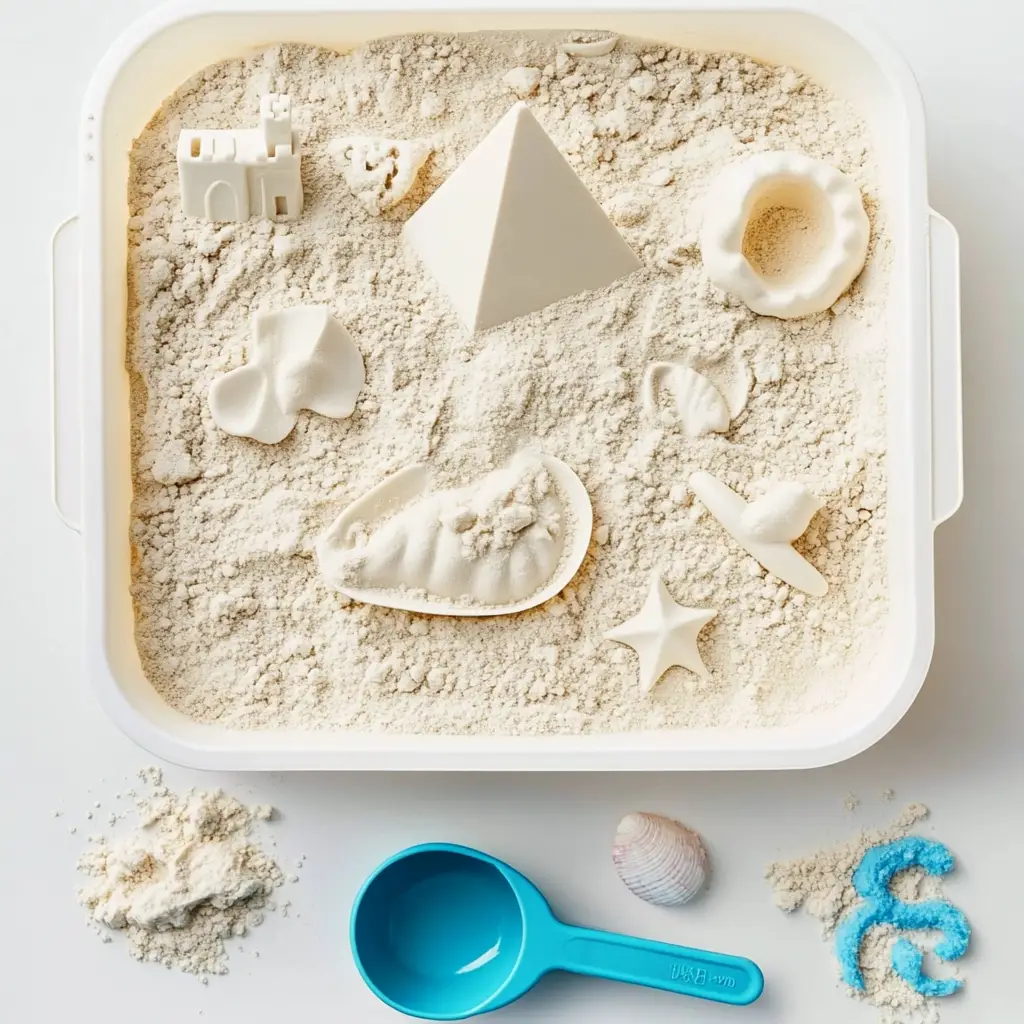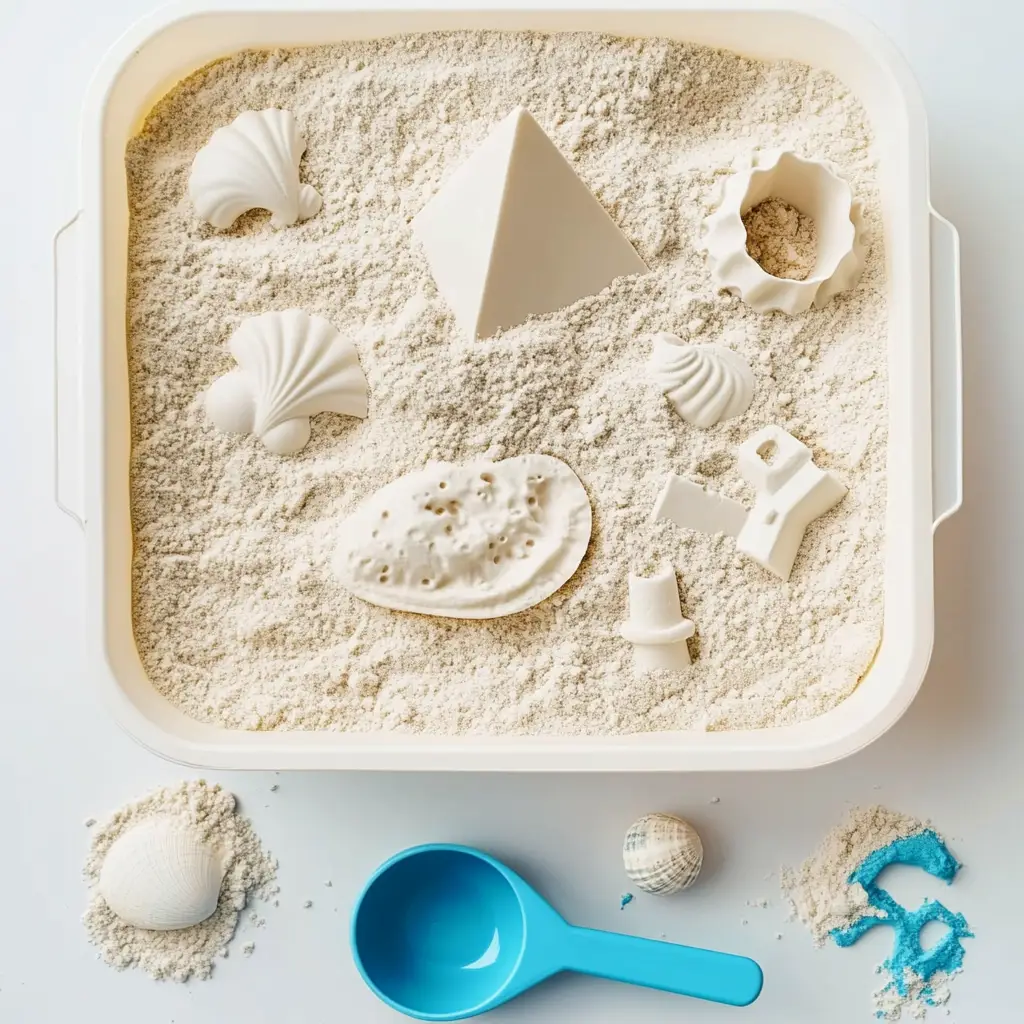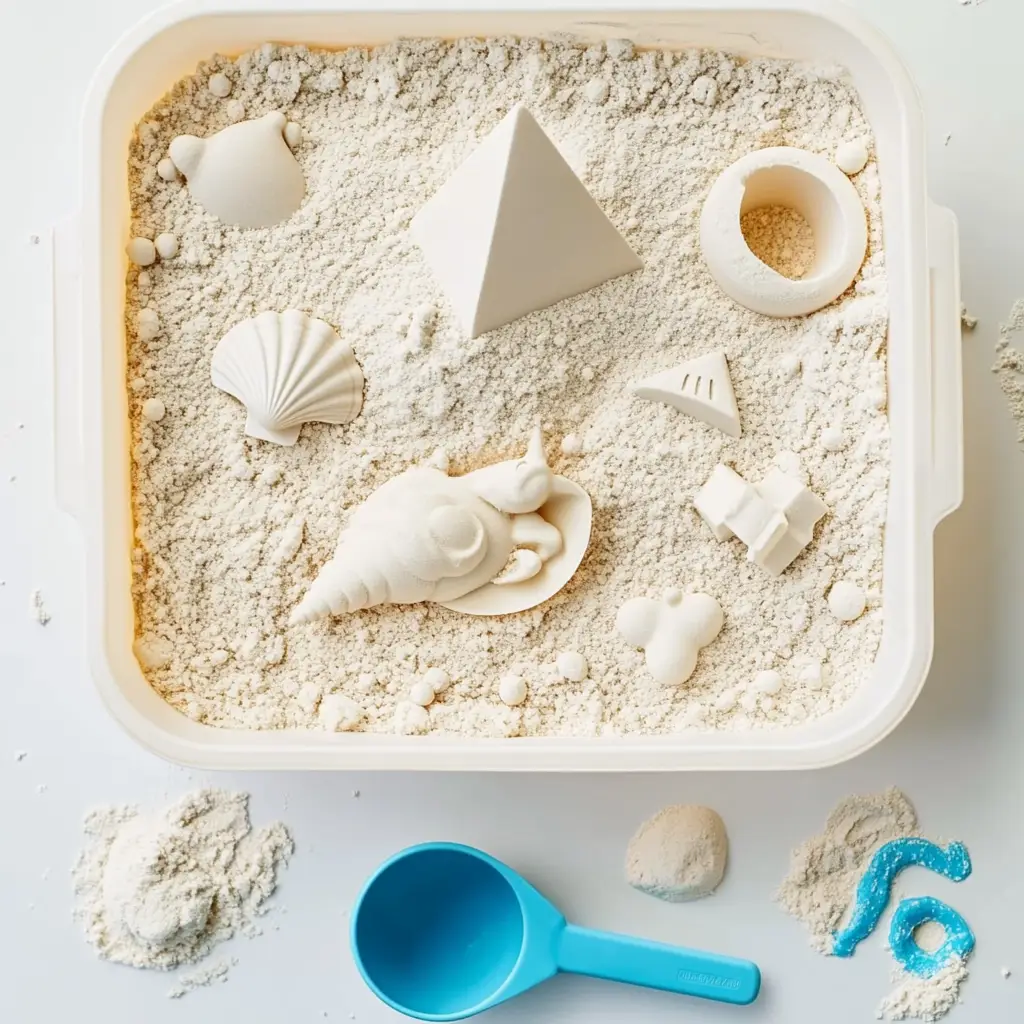In a world filled with screens and constant noise, finding hands-on, educational, and calming activities for children is more important than ever. Enter DIY Moon Sand—a simple yet magical play material that you can make at home using just two ingredients. Also known as “cloud dough,” this soft, moldable substance mimics the feel of damp beach sand and brings hours of open-ended fun.
This guide covers everything you need to know: how to make it, why it’s beneficial, how to store it, variations, and fun ideas for sensory play. Whether you’re a parent, teacher, or caregiver, DIY moon sand is a budget-friendly tool to encourage imagination and fine motor development in kids.
Why Is DIY Moon Sand So Popular?
DIY moon sand has earned its place as a favorite activity in homes and classrooms for many reasons:
-
Affordability: The basic recipe requires only flour and oil—items you likely already have in your pantry.
-
Ease of Preparation: No heat, no baking, and no special equipment. It’s fast and foolproof.
-
Sensory Benefits: The soft texture stimulates tactile exploration and supports sensory development.
-
Reusable: It lasts for weeks when stored properly.
-
Safe Options for Toddlers: With natural ingredients like coconut oil and food-safe add-ins, moon sand can be toddler-friendly.
Because it’s easy to make and endlessly customizable, moon sand appeals to children of all ages. Plus, it’s a calming activity that can reduce stress and help children focus—a valuable asset for parents and teachers alike.
Why You’ll Love This DIY Recipe
This moon sand recipe is designed with simplicity and flexibility in mind. Whether you need a last-minute activity for a rainy afternoon or you’re planning an elaborate sensory bin setup, this recipe will meet your needs.
-
Quick to Make: Mix it in under 5 minutes.
-
Non-Toxic: Especially when using coconut oil and edible-safe additions.
-
Mess-Manageable: Clean-up is simple if play is contained to a bin or tray.
-
Versatile: Change up colors, scents, and textures based on your child’s interests or seasons.
-
Encourages Independent Play: Children can create, explore, and experiment on their own.
DIY moon sand can be a calming reset button in your child’s day. It encourages both structured play (like using molds) and open-ended creativity (like building their own shapes or scenarios).

Ingredients
The beauty of this recipe lies in its simplicity. With just a couple of household staples, you’re on your way to creating a wonderful sensory experience.
Basic Ingredients:
-
4 cups all-purpose flour
-
½ cup baby oil (or coconut oil for a natural alternative)
Optional Add-ins:
-
A few drops of food coloring (mix with oil before combining for even distribution)
-
Essential oils (lavender, vanilla, lemon)
-
Glitter (for visual sparkle)
-
Edible sprinkles (for toddler-safe play)
Tools:
-
A large mixing bowl or sensory bin
-
Measuring cups
-
A spoon or your hands for mixing
This combination creates a moldable, soft material with a sand-like texture—perfect for scooping, pressing, and building.
Step-by-Step Instructions
Step 1: Prepare the Ingredients
Measure out 4 cups of all-purpose flour and ½ cup of oil. If you’re planning to color your moon sand, this is the moment to mix food coloring into the oil. Blending the color into the oil first helps ensure a uniform color and avoids streaky results.
Step 2: Mix Thoroughly
Pour both ingredients into a large mixing bowl or plastic bin. Stir with a spoon initially, then switch to your hands. The goal is to achieve a soft, moldable texture that holds its shape when pressed but crumbles apart when released—similar to damp beach sand.
If the mixture feels too dry, add a little more oil, one tablespoon at a time. If it feels too wet or greasy, sprinkle in some additional flour.
Step 3: Add Custom Elements (Optional)
Now it’s time to get creative. Add glitter for sparkle, a few drops of essential oil for fragrance, or edible sprinkles to make it toddler-safe and fun. You can divide the moon sand into smaller batches and give each one a different scent or color.
Step 4: Transfer to a Play Surface
Once your moon sand is mixed and customized, move it to a large tray or sensory bin for play. Add tools like cookie cutters, measuring cups, scoops, small plastic figurines, or sandcastle molds to enhance the experience.
Encourage kids to explore, create, and build. They’ll be entertained for hours, and the activity can be as structured or as open-ended as you like.

You Must Know: Safety and Clean-Up Tips
Moon sand is generally safe and easy to clean up, but here are a few tips to ensure a stress-free experience:
-
Always supervise toddlers during play, especially if using baby oil or glitter.
-
Use coconut oil if your child is prone to putting things in their mouth. It’s edible and safe.
-
Avoid carpeted areas or fabrics. Play on tile, hardwood, or outside for easier clean-up.
-
Store away from pets. Ingredients like essential oils or glitter may be unsafe for animals.
-
Clean up with a vacuum or handheld broom if flour spills. Don’t use water immediately as it may turn the flour into paste.
Make-Ahead and Storage Tips
DIY moon sand stores beautifully. To make it ahead of time or preserve leftover batches, follow these tips:
-
Use airtight containers or zip-lock bags. Seal tightly to keep the sand soft and moldable.
-
Label and date your containers, especially if you’ve made different colors or scents.
-
Refresh with oil if the sand starts to feel dry. Add a small amount and knead it in.
-
Keep in a cool, dry place. Avoid humid areas as moisture can affect texture.
With proper storage, moon sand can last several weeks. Many parents report using the same batch for a month or longer with occasional oil refreshes.
Seasonal Adaptations
Moon sand can easily be adapted for seasonal or holiday play. Here are a few fun ideas:
-
Fall: Add orange food coloring and a dash of cinnamon or pumpkin spice for a cozy, autumn-themed batch.
-
Winter: Use white glitter and peppermint extract for a snowy, frosty version.
-
Spring: Choose pastel colors and floral scents like rose or lavender. Add small flower molds for themed play.
-
Summer: Use bright colors like neon blue or yellow. Pair with mini beach toys for a summer day indoors.
You can even align your moon sand themes with birthdays, classroom units, or favorite movies and books. The options are endless.
Serving Suggestions (Play Ideas)
Wondering how to keep the activity fresh each time? Here are creative ways to elevate your child’s moon sand play:
-
Construction Zone: Add toy trucks, small shovels, and blocks. Encourage your child to build roads or structures.
-
Ice Cream Parlor: Use scoops, cones, sprinkles, and bowls to mimic a real dessert stand.
-
Dinosaur Dig: Hide plastic bones or small fossils for kids to uncover.
-
Treasure Hunt: Bury plastic coins, beads, or “gems” and let kids dig for treasure.
-
Nature Play: Add pine cones, leaves, or shells for an earthy, outdoor feel.
Each play session can be themed, helping extend the use of your moon sand and promote imaginative thinking.
Frequently Asked Questions
Is moon sand safe for babies or toddlers?
Yes—if made with coconut oil and free of glitter or essential oils. Always supervise young children during play.
How long does DIY moon sand last?
Properly stored in an airtight container, moon sand can last for up to a month or longer. Refresh with oil as needed.
Can I use gluten-free flour?
Yes, although texture may vary. Cornstarch or rice flour are common substitutes for those with allergies or sensitivities.
What if my moon sand is too crumbly or too greasy?
Add oil one tablespoon at a time if too crumbly. Add flour a little at a time if too greasy.
Can I use vegetable oil instead of baby or coconut oil?
You can, though it may feel heavier and not smell as pleasant. Coconut oil is recommended for a better sensory experience.
Can I bake with it after play?
No. Moon sand is not meant for baking or consumption. It’s a play material only, even when made with edible ingredients.
Conclusion
DIY Moon Sand offers the perfect blend of educational value, sensory stimulation, and hands-on creativity. It’s an accessible, budget-friendly way to bring joy into your home or classroom while fostering developmental benefits for young learners.
Whether you’re preparing for a playdate, setting up a sensory table, or just looking for a rainy-day activity, moon sand is an excellent go-to option. It’s endlessly customizable, easy to make, and something kids will come back to again and again.
Try a batch today and watch your child’s imagination come alive. With just flour and oil, you’re crafting more than a play material—you’re creating opportunities for learning, discovery, and joy.


